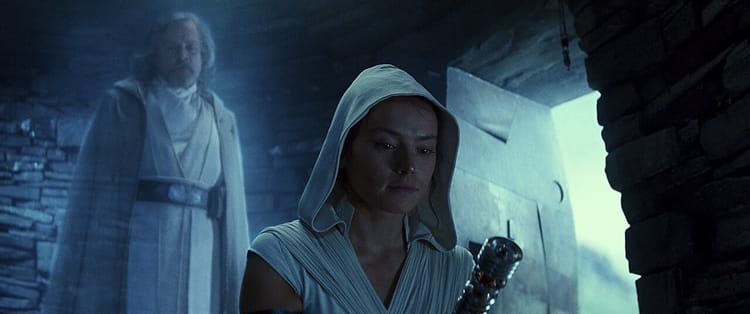
Running Commentary 5/10/2021
Hello,
No oriole has arrived yet, which I’ll chalk up to the cold snap we’ve had around here.
It was also just Mother’s Day. If that’s news to you, you might be in trouble.
Anyway…
Watching…
There’s new Star Wars out, in the form of The Bad Batch, a spin-off series from The Clone Wars that had a backdoor pilot in the seventh season of that show. An hour-plus premiere came on May the 4th, with a second, thirty-minute episode coming last Friday. Here are my notes on the show so far: SPOILERS

- The titular characters are a little weak, so far. They seem to largely just be their roles in the squad: Wrecker is the muscle, Crosshair is the sniper, Omega is the kid, Hunter is the leader, etc. I’m sure they’ll get fleshed out as we go on, but as yet they seem a bit stock.
- That said, I think the premise of this show is really strong. The second episode, especially, gave a nice, ground-level look at life changing under the New Order. We see an origin for that “chain-code” Boba Fett flashed in The Mandalorian, with some dialogue that seemed to be pointing toward the big database from the Alphabet Squadron trilogy. Neat tie-ins.
- Speaking of tie-ins, or the lack of such: there’s controversy(!) concerning the opening scenes of the series, in which we see Caleb Dume (a.k.a. Kanan Jarrus of Rebels) escape from Order 66 in a way different than how the event was portrayed in the earlier Kanan: The Last Padawan comic series. This is very similar to the way Season 7 of The Clone Wars made changes to the events during the Siege of Mandalore, and it has set off a similar discussion about how Canon is supposed to work. My thoughts could (and should, to be honest) be their own post. In general, I think declaring artistic works canon is unworkable, but I do think a settled set of facts about the world and timeline of Star Wars is needed, not really just to keep consistency, which, at this granular a level, really only worries the people at Wookieepedia, but also to not be playing favorites among different creators.
- I wonder where Omega’s supposed to have picked up that accent?
- Crosshair turning on them because of the chip seems a little cheap. The Bad Batch don’t have much connection to the Jedi, and their whole deal is being unique among clones. Having one join Order 66 of his own volition would have been interesting.
- Overall, it’s a pretty strong start to the show. I don’t know how long The Bad Batch is meant to run for, but I could see Lucasfilm getting many seasons out of it.
Also, this past week I watched a documentary about J. J. Audubon. Titled simply Audubon, it’s on Amazon Prime Video. As someone who was already fairly familiar with Audubon, I found it a pretty good overview of his life and his impact on ornithology, illustration, and conservation. It focused rather entirely on the creation of Birds of North America, so it wasn’t an exhaustive biography, but that work is really what he’s remembered for. If you’re a fan of this newsletter’s Bird of the Week section, that’s pretty much me doing a modern version of what Audubon did back in the day. (I must say the modern version is an easier undertaking.) Audubon was a neat bit of history, and if you can watch Amazon Prime stuff, I recommend it.
Reading…
I have read Thrawn Ascendancy: Greater Good. A full review is forthcoming here soon. My quick take is that it is an improvement on Chaos Rising, in that it has a more driven, interesting plot. There’s less meandering and tangentially related characterization set pieces. While this means that there are fewer really strong character moments, it also kept me reading. Greater Good had actual interesting stuff happening in it, which is what Chaos Rising lacked for a lot of it.
I’ve also been reading Jennifer Ackerman’s The Genius of Birds. I’m about a quarter of the way into it, having so far read about chickadees and about New Caledonian crows. The idea that birds are stupid, blindly instinctual creatures might be true-ish of chickens, it really undersells how clever a lot of other birds are. Ackerman is a good science writer; as someone without any formal background in ornithology, I’ve been able to understand her points and arguments thus far.

Bird of the Week
In honor of Mother’s Day yesterday, our bird of the week is a mother merganser. The Common Merganser is a large, sawbilled duck found in lakes and rivers throughout North America and Eurasia (including Great Britain, where it is known as the goosander). They feed on fish and other aquatic life, which they swim after underwater.
For such widespread birds, their breeding and nesting habits is not well understood. What is known is that mothers are seemingly unable to specifically identify their young, and likewise the young their mothers. In areas that are home to multiple families, merganserlings tend to drift from hen-to-hen. It takes a pond, as Hillary Clinton might say. Some mother mergansers have been seen tending to upwards of 50 chicks, though it’s unlikely these were all her own. Very young mergansers (those who can fit, anyway) may ride on their mother’s back (or the back of whatever merganser they believe is their mother) as they learn to swim and dive.
I’ve already covered this earlier when I wrote of the Hooded Merganser, but these ducks’ name comes from “mergus”, a term from antiquity, naming some sort of pursuit-diving bird, and “anser”, a word meaning goose. Their binomial name is simply Mergus merganser. “Goosander” is apparently a portmanteau of “goose” and “gander”. Despite it’s large size, Mergus merganser is not considered a goose by modern science.
Curation Links
The Travels of a Master Storyteller | Yasmine Seale, The Paris Review
Famous in the world of folktales, her name up there with Hans Christian Anderson and Aesop, Scheherazade is known throughout the world as the (actually herself quite fictional) author of One Thousand and One Nights, a compendium of Arabian tales supposedly told each evening to stave off execution by a wife-squandering king. In the Western world, the tales of Aladdin and his Magic Lamp and of Ali Baba and the Forty Thieves are especially popular. Which, I suppose, is a good thing. It seems those were added to the collection by a Syrian monk while he was working with a Frenchman to produce the first translation for Europe, and it seems the monk knew how to please his audience.
Yasmine Seale looks at Hanna Diyab, monk and traveler whose memoirs, The Book of Travels, have recently been translated into English. The piece is the forward to this translation, republished in The Paris Review.
Flight Plan | Orville & Wilbur Wright, Lapham’s Quarterly
Excerpted from an article published in The Century Magazine, the Wright Brothers tell of their history and of their recent experiments in powered flight.
What England owes the Irish | Tom Holland, UnHerd
From Tom Holland (the history writer, not the current Spider-Man) a look at the influence of Irish Christians on the history of Great Britain. Includes a profile of the famed Abbot Columba.
Can Single Cells Learn? | Catherine Offord, The Scientist
A report on Beatrice Gelber’s research on paramecium, microscopic, single-celled organisms that prey on bacteria. Specifically, it covers Gelber’s controversial claim that the organisms, despite not having the usual mechanisms of cognizance, are able to form memories and learn.






Member Commentary